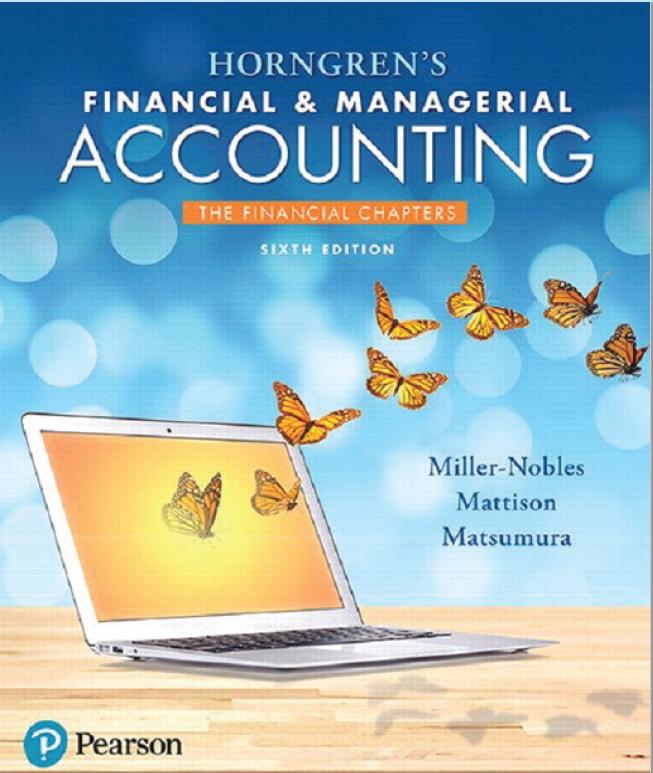The Tusquittee Company is a retail company that began operations on October 1, 2018, when it incorporated
Question:
Following is the chart of accounts for The Tusquittee Company. As a new business, all beginning balances are $0.
-1.png)
The Tusquittee Company completed the following transactions during the last quarter of 2018, its first year of operations:
Oct. 1 Issued 25,000 shares of $1 par value common stock for cash of $10 per share.
1 Issued a $200,000, 10-year, 8% mortgage payable for land with an existing store building. Mortgage payments of $2,425 are due on the first day of each month, beginning November 1. The assets had the following market values: Land, $40,000; Building, $160,000.
1 Issued a one-year, 10% note payable for $10,000 for store fixtures. The principal and interest are due October 1, 2019.
3 Purchased merchandise inventory on account from Top Rate for $125,000, terms n/30.
15 Paid $160 for utilities.
31 Recorded cash sales for the month of $185,000 plus sales tax of 6%. The cost of the goods sold was $110,000 and estimated warranty payable was 8%.
31 Recorded October payroll and paid employees.
31 Accrued employer payroll taxes for October.
Nov. 1 Paid the first mortgage payment.
3 Paid Top Rate for the merchandise inventory purchased on October 3.
10 Purchased merchandise inventory on account from Top Rate for $150,000, terms n/30.
12 Purchased 500 shares of treasury stock for $15 per share.
15 Paid all liabilities associated with the October 31 payroll.
15 Remitted (paid) sales tax from October sales to the state of North Carolina.
16 Paid $6,000 to satisfy warranty claims.
17 Declared cash dividends of $1 per outstanding share of common stock.
18 Paid $245 for utilities.
27 Paid the cash dividends.
30 Recorded cash sales for the month of $140,000 plus sales tax of 6%. The cost of the goods sold was $84,000 and estimated warranty payable was 8%.
30 Recorded November payroll and paid employees.
30 Accrued employer payroll taxes for November.
Dec. 1 Paid the second mortgage payment.
10 Paid Top Rate for the merchandise inventory purchased on November 10.
12 Paid $7,500 to satisfy warranty claims.
15 Sold 300 shares of treasury stock for $20 per share.
15 Paid all liabilities associated with the November 30 payroll.
15 Remitted (paid) sales tax from November sales to the state of North Carolina.
18 Paid $220 for utilities.
19 Purchased merchandise inventory on account from Top Rate for $90,000, terms n/30.
31 Recorded cash sales for the month of $210,000 plus sales tax of 6%. The cost of the goods sold was $126,000 and estimated warranty payable was 8%.
31 Recorded December payroll and paid employees.
31 Accrued employer payroll taxes for December.
Requirements
1. In preparation for recording the transactions, prepare:
a. An amortization schedule for the first 3 months of the mortgage payable issued on October 1. Round interest calculations to the nearest dollar.
b. Payroll registers for October, November, and December. All employees worked October 1 through December 31 and are subject to the following FICA taxes:
OASDI: 6.2% on first $118,500 earned; Medicare: 1.45% up to $200,000, 2.35% on earnings above $200,000. Additional payroll information includes:
-2.png)
c. Calculations for employer payroll taxes liabilities for October, November, and December: OASDI: 6.2% on first $118,500 earned; Medicare: 1.45%; SUTA:
5.4% on first $7,000 earned; FUTA: 0.6% on first $7,000 earned.
2. Record the transactions in the general journal. Omit explanations.
3. Post to the general ledger.
4. Record adjusting entries for the three month period ended December 31, 2018:
a. Depreciation on the Building, straight-line, 40 years, no residual value.
b. Store Fixtures, straight-line, 20 years, no residual value.
c. Accrued interest expense on the note payable for the store fixtures.
d. Accrued interest expense on the mortgage payable.
e. Accrued income tax expense of $36,000.
5. Post adjusting entries and prepare an adjusted trial balance.
6. Prepare a multi-step income statement and statement of retained earnings for the quarter ended December 31, 2018. Prepare a classified balance sheet as of December 31, 2018. Assume that $13,840 of the mortgage payable is due within the next year.
7. Evaluate the company's success for the first quarter of operations by calculating the following ratios. The market price of the common stock is $25 on December 31, 2018. Round to two decimal places.
a. Times interest earned
b. Debt to equity
c. Earnings per share
d. Price/earnings ratio
e. Rate of return on common stock
8. The Tusquittee Company wants to expand and is considering options for raising additional cash. The company estimates net income before the expansion of $250,000 in 2019 and that the expansion will provide additional operating income of $75,000 in 2019. The company intends to sell the shares of treasury stock, so use issued shares for the analysis rather than current shares outstanding. Compare these options, assuming a 30% income tax rate:
Plan 1: Issue 10,000 additional shares of common stock for $20 per share
Plan 2: Issue $200,000 in 20-year, 12% bonds payable.
Which option will contribute more net income in 2019? Which option provides the highest EPS?
Balance sheet is a statement of the financial position of a business that list all the assets, liabilities, and owner’s equity and shareholder’s equity at a particular point of time. A balance sheet is also called as a “statement of financial...
Step by Step Answer:

Horngrens Financial And Managerial Accounting The Financial Chapters
ISBN: 9780134486840
6th Edition
Authors: Tracie L. Miller Nobles, Brenda L. Mattison, Ella Mae Matsumura





